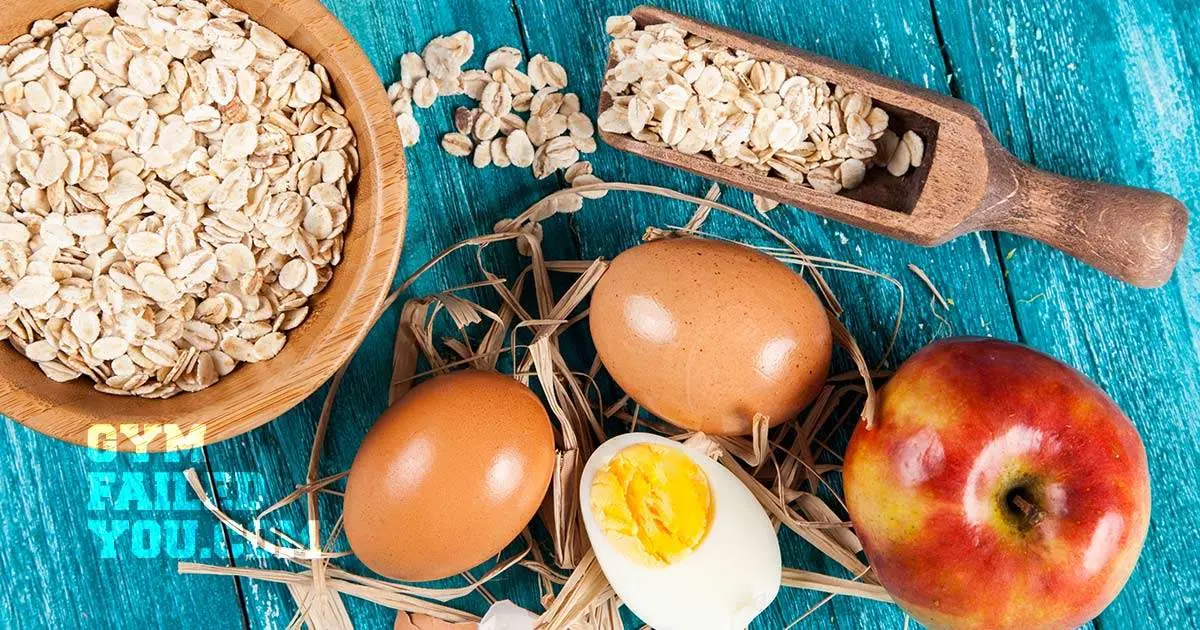You just hammered that 12 oz. Porter steak. Or if you’re a vegetarian, perhaps you had quinoa and legumes. We all need it to live, but what is protein? What are the steps of protein digestion as it goes through your body? And how do we use protein?
This is a reference guide to help you better understand our use of protein. Let’s start with the initial building blocks, amino acids.
What are Amino Acids?
Amino acids are the building blocks of protein (think of them as Lego pieces). And you’ve no doubt heard this before. But what’s really cool is each of the twenty amino acids has a unique shape. Their shape is dictated by their chemical structure.
Like carbohydrates, they include carbon, hydrogen, and oxygen. But it’s the addition of nitrogen in all amino acids that make them different. A few also contain sulfur.
What are Essential Amino Acids?
Essential amino acids are simply those which we cannot produce in our body. There are nine of them that we cannot produce. They must be obtained from a food source. If they’re not supplied in the diet, we’ll break down our own tissue (predominantly muscle) to obtain them for critical functions.
The essential amino acids are:
- Histidine
- Isoleucine (BCAA)
- Leucine (BCAA)
- Lysine
- Methionine
- Phenylalanine
- Threonine
- Tryptophan
- Valine (BCAA)
All of the BCAA labels indicate that it’s a branched-chain amino acid. I mention this since they are a popular supplement amongst some fitness enthusiasts. There are very few occasions where taking them individually is more beneficial than the whole protein. In fact, most whey protein powders are fortified with additional BCAA’s. Save your money.
What are Nonessential Amino Acids?
Nonessential amino acids are those in which we can synthesize in our bodies from other amino acids. There are a few that are “conditionally essential,” but not necessary to understand. The nonessential amino acids include:
- Alanine
- Arginine
- Asparagine
- Aspartic acid
- Cysteine
- Glutamic acid
- Glutamine
- Glycine
- Proline
- Serine
- Tyrosine
Protein Structures
Remember, protein is made up of a chain of amino acids. And different amino acids have an affinity or attraction to other amino acids. This makes the chain fold upon itself in a unique shape.
To summarize so far, amino acids have different shapes based on their chemical makeup. And they bind to create different shaped proteins.
The shape of each protein is designated into primary, secondary, tertiary, and quaternary structures. Without going into detail, each just breaks down the levels of building blocks, bonds, and folded structures.
Metaphorically speaking, let’s build a Lego town.
- The primary structure is the sequence you use each Lego block to build a wall.
- The secondary structure is the joining of several walls through weak links.
- The tertiary structure is the connection of the separate walls with a roof. This is a bit of a stretch, but it will do for our needs.
- The quaternary structure is the joining of several lego buildings that serve a need.
What is important to understand is the specific sequence of amino acids creates a uniquely folded shape. And the shape of a protein has real significance. It dictates the functional role of protein in our body.
Beginning Steps of Protein Digestion
Unlike starches, the stomach is where a lot of the “breakdown” steps happen with protein. It’s the low pH of the stomach that does the majority of the work. The acid that’s secreted from the wall of the stomach is hydrochloric acid. This acid denatures the protein.
What is Denaturing the Protein?
Let me first explain that different amino acids join together, some of which like water and some that don’t. Imagine a rope that is in a liquid environment and all the sides of the amino acids that dislike water fold toward the middle. Meanwhile, the sides of the rope that “like” water remain on the outside. The rope then crumbles into a ball shape.
Now you need a hot or acidic environment to unravel (i.e. “denature”) that rope. That’s where hydrochloric acid in the stomach comes into play!
This acid first unravels (denatures) the rope and activates pepsin. Pepsin is an enzyme that begins to break the unraveling rope into smaller pieces of rope. We call these smaller pieces of rope polypeptides.
The majority of absorption occurs in the first part of the small intestine (duodenum). The broken-down components get carried across the small intestine’s wall. They end up in the bloodstream for use wherever needed. Some go directly to the liver (via the hepatic portal duct).
Rate of absorption
Different protein sources are absorbed at different rates.
There are a lot of factors at play. Just know that not all protein sources are absorbed at the same rate. This is similar to low and high glycemic carbohydrates.
But do note that whole food protein is absorbed faster than individual amino acids. There are two different systems for the absorption of both. And we’re better equipped to absorb polypeptide (a string of amino acids) chains than individual amino acids.
You can read more about this in my article BCAA vs Whey Protein: The Differences, Which to Take, and Why.
Final Stages of Protein
Once the snippets of rope (polypeptides) enter the small intestine, they are further broken down into shorter strands until they are finally broken down into their amino acid components.
The amino acids get carried across the small intestine’s wall into the bloodstream for use wherever needed.
How to Improve Protein Digestion
The best way to improve protein digestion is to drink plenty of water with a high protein meal. When you eat protein the breakdown reactions require water to go “into the equation.” The opposite is true of carbohydrates. When we digest carbohydrates, water is yielded in the reaction. In other words, water is gained in carbohydrate digestion and water is lost in protein digestion.
So, drink plenty of water with your high protein meals and throughout the day. This is the best way to help protein digestion.
End Product and Uses of Protein Digestion
What do we use the amino acids for? The incomplete list:
- Tissue repair
- Growth
- Tissue replacement
- Making enzymes
- Protein turnover
- Fluid balance
- Antibodies
- Acid-base balance
- Hormones
- Transport proteins
- Blood clotting
- Visual pigments
- Energy production
- And so much more!
A normal person’s body is incredibly efficient at this process. Ensuring your body gets all the amino acids it needs out of the protein you eat.
A Note about Enzymes
Because enzymes are made up of amino acids (protein), they are also “digested” in the stomach. I occasionally read about or overhear someone taking enzymes for this or that. But, remember, once they enter the low pH (acidic) environment of the stomach, they too are torn apart. This, of course, renders them useless.
Unless you have some way of bypassing our GI tract, save your money. Taking enzymes has no effect.
Protein and Aging
Believe it or not, our age plays a role in our protein needs and how it’s processed. We all know that we lose body mass as we age. And a lot of that mass is muscle tissue and bone density. It is possible to maintain some of this lean body mass through strength training and nutrition.
But is there a difference in how it is digested as we age? Endogenous anabolic hormone levels are lower in older adults. This may be responsible for a diminished anabolic response to leucine at the muscle cell level. But as far as our gut is concerned, there are changes in the sensitivity to nutrients. Digestion is not as efficient.
It’s also important to note that older adults should pay attention to their protein intake. There’s a trend that consumption amounts diminish as we age. Preventing this also helps prevent muscle loss.
Incorporating whey protein into older adults dietary plans have also been shown to help prevent muscle loss. You can read more about my the best whey proteins in my article 5 Best Whey Protein Powders to Boost Your Workout Results.
Takeaways on The Steps of Protein Digestion
Protein has so many amazing functions in our bodies! Their role goes way beyond simply building muscle tissue. And the chemistry of amino acid metabolism is a rabbit hole that is deep, but fascinating. The complexities are beyond the scope of this article.
We mentioned protein is made up of amino acids that form a chain (polypeptide). This chain folds upon itself to form more complex structures. Sometimes several complex chains join to build large protein structures that are very efficient at their job. Hemoglobin is one such example.
There are twenty amino acids, nine of which we cannot build on our own. These are essential amino acids that we must obtain in our diet. So, if you’re a vegetarian, pay careful attention to the combinations of food to make sure you’re obtaining all of the essential amino acids necessary.
Our body’s GI tract is well built to break down ingested proteins for absorption. In fact, it does a better job absorbing whole food protein than simply taking amino acids on their own.
References and Resources
Dangin, M., Guillet, C., Garcia‐Rodenas, C., Gachon, P., Bouteloup‐Demange, C., Reiffers‐Magnani, K., Fauquant, J., Ballèvre, O. and Beaufrère, B. (2003), The Rate of Protein Digestion affects Protein Gain Differently during Aging in Humans. The Journal of Physiology, 549: 635-644
Groff, JL et al. Advanced Nutrition and Human Metabolism, St. Paul, MN: West Publishing Company, 1995.
Douglas Paddon-Jones, Wayne W Campbell, Paul F Jacques, Stephen B Kritchevsky, Lynn L Moore, Nancy R Rodriguez, Luc JC van Loon, Protein and healthy aging, The American Journal of Clinical Nutrition, Volume 101, Issue 6, June 2015, Pages 1339S–1345S
Douglas Paddon-Jones, Kevin R Short, Wayne W Campbell, Elena Volpi, Robert R Wolfe, Role of dietary protein in the sarcopenia of aging, The American Journal of Clinical Nutrition, Volume 87, Issue 5, May 2008, Pages 1562S–1566S
Raquel Sousa, Reto Portmann, Sébastien Dubois, Isidra Recio, Lotti Egger, Protein digestion of different protein sources using the INFOGEST static digestion model, Food Research International, Volume 130, 2020, 108996.




